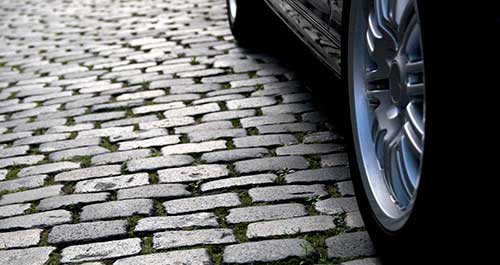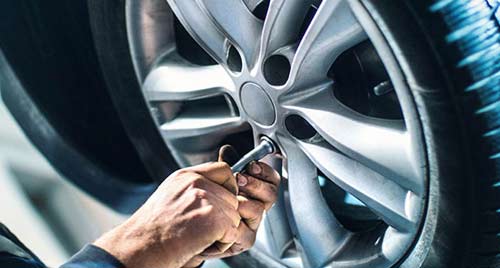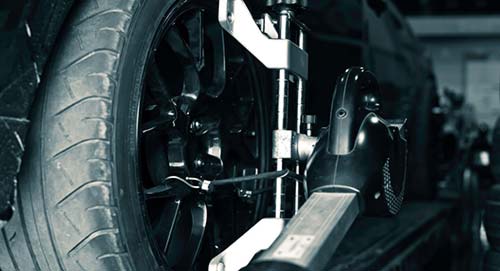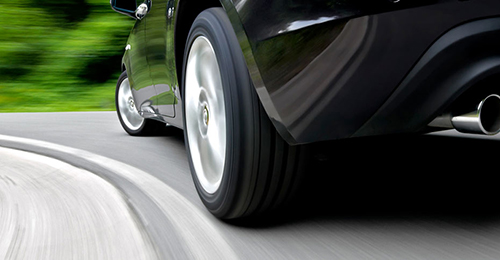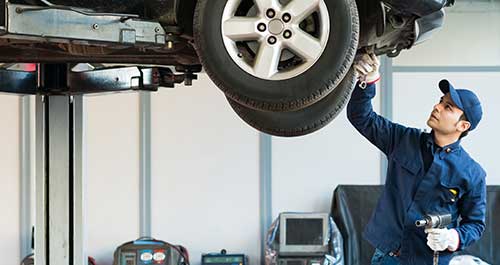It’s normal for your car to vibrate slightly when you’re driving thanks to the rotation of the crankshaft, transmission gears and other moving parts in your engine. But, when these gentle vibrations feel more like shaking, it’s time to investigate the reasons why.
How to check your car for vibrations
The most common reasons for your car to excessively vibrate are a problem with your tyres, wheels, brakes, steering, suspension, axle or engine. Sounds like a lot of reasons, doesn’t it? Don’t worry. We’ll take a look at each in turn to see what the potential problems could be.
First, try to determine where the vibrations are coming from and when they start. Are the vibrations only noticeable when you start and accelerate the car? Do they only occur when you turn and brake? Do they only happen when you drive at high speed? Or maybe they increase in intensity as you accelerate?
Now you know when the vibrations start, let’s look at the possible reasons for the shaking.
Tyres
The most common reason for your car to shake is due to a problem with your tyres. These problems include:
- Out of balance tyres
If you notice that the shaking is minimal at low speeds, but intensifies as you accelerate to 90km/h, there’s a good change this is due to your tyres being out of balance. The easiest way to check if this is the reason behind the excessive vibrations is look for flat spots on your tyres. Depending on the amount of damage, you might be able to solve the issue by simply getting your tyres rebalanced. However, if there is too much damage, you will need to replace the tyres.
- Underinflated tyres
Underinflated tyres can cause your car to vibrate excessively when you drive at faster speeds. If you don’t find any flat spots on your tyres, it’s a good idea to check your air pressure matches the recommendations in your owners’ manual. Underinflated tyres can cause your tyres to blowout.
- Uneven tyre wear
Tyres can be easily knocked out of alignment by various road hazards. This causes them to wear unevenly, for example, cupping (a wavy surface on the tyre thread) or excessive wear on one side. This can be solved by checking your tyres for damage and replacing and/or realigning your tyres (depending on the amount of damage on the tyres).
- Tyre defects
An out-of-round (i.e. misshapen) tyre, or one where the tread or internal belts have separated from the body of the tyre, can cause your car to vibrate at low speeds (under 30km/h). While these types of problem could be due to a manufacturing defect, it can also be caused by severe road hazards.
- Worn-out or bald tyres
If your tyres have little or no tread, your car will have poor traction, limited stopping ability and reduced cornering power. You will also be skidding around in poor weather conditions. The shaking is an additional warning that you need to replace your tyres.
- Car rims
Another possible tyre-related reason are your rims. This could be caused by rough driving or hitting large bumps or potholes, causing the rims to bend, damaging your tyre.
- Low rolling resistance tyres
Also known as low profile tyres, this type of tyre is increasingly common on hybrid and EV cars as they reduce drag and resistance, boosting their environmental credentials. However, they are harder than most drivers are used to, and offer less driving comfort as they don’t absorb as many of the imperfections on the road. This means that if your car has low rolling resistance tyres, it could be the reason for the vibrations, but it’s best to check other potential causes.

Wheels
After you’ve checked your tyres, turn your attention to your wheels. The vibrations could be caused by:
- Unbalanced wheels
If you’ve hit a deep pothole or low curb without damaging your tyres, there’s still a chance that you’ve damaged your wheels, causing them to become unbalanced. Unfortunately, this is difficult to diagnose by yourself, so it’s best to talk to a qualified mechanic if you think this is the reason for your car’s vibrations.
- Bent or damaged wheels
Deep potholes and other road hazards can bend or damage your wheels, causing your car to vibrate excessively. To diagnose this properly, you need to use a wheel balancing machine, which will tell you if it’s possible to repair the wheel or if you need to replace it.
- Wheel runout
This is measured with a dial indicator and refers to any deviation from a perfectly circular rotation when it is spun. Depending on the measurements, the easiest solution is often a new wheel.
- Wheel bearings
If you feel the vibrations through your steering wheel, there’s a good chance that your wheel bearings have become worn or damaged. While wheel bearings usually last the lifespan of your car, this isn’t always the case, especially if you regularly drive off-road, have high mileage or have a hard driving style.
Brakes
If the vibrations aren’t due to a problem with your wheels or tyres, it’s a good idea to check your brakes. Some parts to check include:
- Rotors / brake discs
If your brake discs have variations in their thickness, also known as excessive runout or being out-of-round, it will cause your car to vibrate when you brake. You can also feel the brake pedal vibrating when you press on it. The brake disc can become warped like this due to heavy wear and tear. In other words, the brake disc is overheated from more and heavier stopping than that particular brake disc can handle.
- Caliper
It’s also possible for the brake calipers to get stuck on the brake disc. When this happens, you’ll notice vibrations through the steering wheel when you drive over 70km/h, and you could smell burning when you stop.
- Brake drums
Just like brake discs, brake drums can also be out-of-round. You will feel additional vibrations when you press the brake pedal, along with a scraping or squealing noise.
Steering
The next place to check is the steering system. The vibrations could be caused by:
- Loose components
Over time, the many parts of your steering will start to wear out, causing your steering to be less responsive than it should be. Where do you notice the vibrations most? If your steering is fine when you drive straight, but shakes when you go around a curve, it suggests a problem with worn out tie rod ends. However, if your steering wheel shakes when you drive straight but not when you turn, it implies you need to replace your ball joints.
- Power steering
The power steering is another possible reason for your steering wheel to shakes when you’re turning a corner, but not when you’re driving along a straight road. To check if this is the cause, check your power steering for leaks and make sure your reservoir has enough power steering fluid.
Suspension
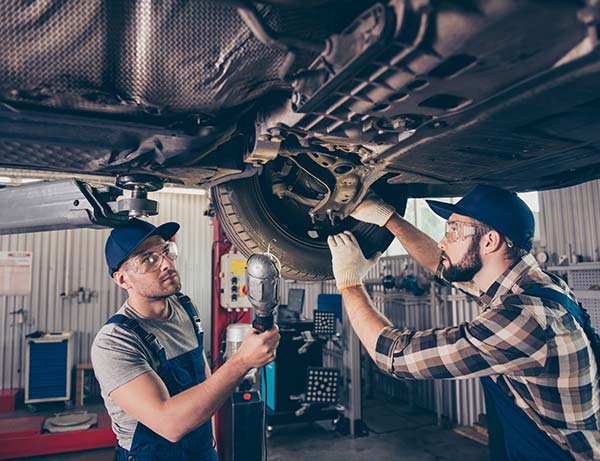
The suspension system is connected to the steering system, so it’s a logical next step. Possible reasons for the vibrations include:
- Out of alignment
Driving into curbs or potholes can also cause your suspension to be out of alignment. One symptom of this is vibrations that are felt at different speeds.
- Loose components
If you notice your car vibrates at certain speeds, but not every time you drive at that speed, there’s a chance the vibrations are caused by loose suspension components or bearings. You might notice that the vibrations increase if you hit a bump in the road and continue until you stop the car. It’s definitely worth checking that all the components in your suspension system are connected properly.
- Worn components
Worn components, such as ball joints and control arm bushings, can cause vibrations at high speeds and when you brake. In this case, the vibrations are a warning that you need to check and maintain your suspension system, replacing any worn components.
Axle
The last part of the car to check before we get to the engine, is the axle. There are three parts that should be checked as the cause of the vibrations:
- Bent axle
As we’ve seen, driving into a pothole can do a lot of damage to your car which isn’t immediately visible. Another potential complication from a pothole is a bent axle. If your axle is bent, your car will shake at increasing intensities, the faster you drive.
- Damaged driveshaft
A driveshaft rapidly spins as it transfers engine power to the rear axles and wheels in rear-wheel drive vehicles (or the front axles and wheels in front-wheel drive vehicles). If this is bent, it can cause dramatic shaking.
- Worn-out constant velocity (CV) joints
CV joints are rubber, accordion-like coverings (boots) around the ends of the drive axles that can cause vibrations if they are torn it allows dirt, dust and road filth to get in and damage the joints. If this happens on a front-wheel drive car, you will need to replace the drive axles.
Engine
The last part of your car to check is the engine. There are a number of parts that could cause the vibrations, including:
- Spark plugs
Worn or dirty spark plugs can cause a petrol car’s engine to misfire in one or more cylinders, which can cause vibrations when the car is idling or at running speeds. The easiest solution is to replace your spark plugs and check the related wiring.
- Air and fuel filters and intake
Engine vibrations can also be due to the air and fuel systems. Sometimes it just needs minor changes to the fuel intake system, for example adjusting the idle on a carburettor or cleaning the fuel intake system, for the problem to be solved.
Air and fuel filters should also be checked. A clogged, dirty or damaged air filter reduces the oxygen supply available for the ignition process, reducing the amount of fuel available as fuel flow is related to the amount of air that gets through. This results in your engine shaking due to a shortage of air and fuel in the engine. A clogged fuel filter causes your car to act in a similar way.
- Loose or disconnected hoses
If any of the multiple hoses in your car – carrying air-fuel mixtures, radiator coolant, vacuum, etc. – is cracked, broken, loose or disconnected, it means that your engine doesn’t receive what it needs to work properly. This will cause your car to start to vibrate, misfire or stall out. It can be easily solved by replacing any bad hoses and checking all hose connections are secure.
- Broken motor mounts
Motor mounts are located between the engine and the body of the car and they absorb engine vibrations while keeping your engine attached to the car. If any of your motor mounts are broken, you will feel the engine’s vibrations in your car whenever the engine is turned on, but the vibrations will be significantly less when the engine is simply idling. The only solution for this issue is to replace the motor mounts.
- Faulty timing belt
The timing belt ensures the synchronization of your intake and exhaust valves with the movement of your pistons. Any issues with it, or any of the other belt-driven accessories, will throw off this precise calibration, causing your engine to shake. Replacing your timing belt if it is worn and damaged will solve the problem.
If you want to read more about diagnosing your car problems, visit our Diagnostic Center
The content contained in this article is for entertainment and informational purposes only and should not be used in lieu of seeking professional advice from a certified technician or mechanic. We encourage you to consult with a certified technician or mechanic if you have specific questions or concerns relating to any of the topics covered herein. Under no circumstances will we be liable for any loss or damage caused by your reliance on any content.
RELATED ARTICLES
Your car and potholes
Common signs of suspension problems
Can you drive a car with broken suspension?
How long do wheel bearings last?
Discover the what, why and how of car alignment
How often to check steering and suspension systems?
Seven reasons to visit a mechanic
What can cause a rack and pinion system to leak?
Bad driving habits that you need to break
Camber, caster and toe on an oval track
How a car steering system works: easy guide
How much does it cost to fix your car's suspension

